The four men stood beaming like proud fathers as their Labrador retrievers playfully romped with one another on a grassy field under a sunny sky earlier this month.
Up close it looked like any group of dog owners enjoying a beautiful day at the park. The tall chain-link fences and foreboding razor wire in the background, combined with the men's matching clothes, told a different story.
The men are four of the 720 inmates at medium-security Enfield Correctional Institution in Connecticut, located about 25 miles northeast of Hartford, where they work with the nonprofit organization America's VetDogs to train service animals that will help wounded military veterans and others suffering from post-traumatic stress disorder.
The dogs aren't the only ones learning from the experience, either.
"It definitely makes me feel a lot better about myself, because after committing a crime, being in here you sometimes feel like everybody looks at you as like being condemned," an inmate named Tyrel told TODAY. "Being given the opportunity to — and being entrusted with a dog, to train and to work with other people, it makes you feel good, and it makes you see that you can be given another opportunity."
RELATED: How rescued birds are helping veterans heal
Tyrel, whose dog is 5-month-old Clancy, is one of 20 inmates at Enfield who are involved in the program. He is up for parole next year after being convicted of larceny, and his work with Clancy and other dogs provides hope for the future as well as skills he may be able to use as a professional dog trainer.
"It gives me confidence that everyone hasn't given up on me,'' he said.
'A win-win'
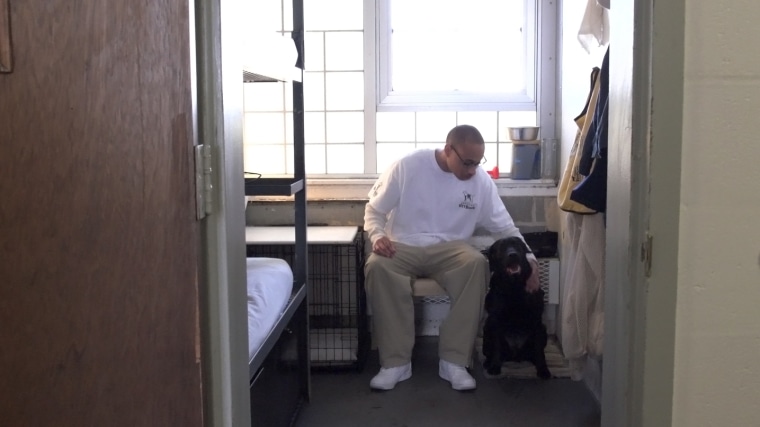
The program began at a women's prison in Framingham, Massachusetts, in 2014, and has since expanded to 12 prisons on the East Coast with 10 dogs being trained per prison, according to Mark Tyler, the AVD instructor who works with the Enfield inmates.
The amount of wounded veterans returning from combat was exceeding the supply of available service dogs, so AVD was looking for a way to get them trained faster in order to reduce the waiting period for veterans to receive them. They worked with the prison administrations and the unions representing the correctional officers to help make it a reality.
RELATED: Bandit the dog helped inmates in jail for 3 years — now he's got his own family
Thanks to being able to work with inmates on a daily basis, the training period for the dogs has been shortened from two years to a year, reducing the average wait for a service dog by a veteran from five years to two years.
"I hate the clichés that are thrown around, but this truly is a win-win program for everybody involved,'' Tyler said.
The program at Enfield features 10 inmates who serve as primary handlers of 10 dogs, including Crema and Mocha, who are the siblings of Charlie, TODAY's own puppy with a purpose. The primary handlers spend nearly every hour of the day with their pooch, and there are also 10 backup handlers who step in when the primary handler is involved in other activities at the prison.
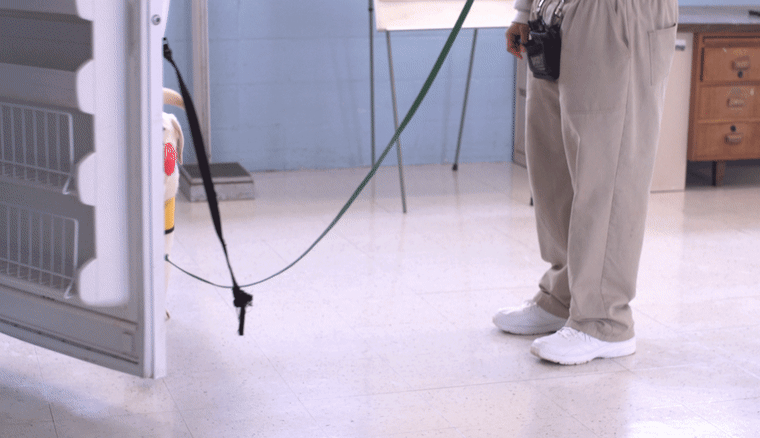
The dogs sleep in cages right beside the inmates' bunkbeds in their dorm-like cells. On the weekends, the animals leave the prison and are cared for by outside civilians involved in the program.
The rate of recidivism for the average inmate at Enfield is 85 percent, according to Timbro. For those involved in the AVD program, it's less than 25 percent.
Inmates are selected based on a clean disciplinary record, the length of their sentence and factors such as the nature of their crime. More than 600 have applied in the two years the program has been at Enfield.
The men in the program all wear their white America's VetDogs shirts with pride.
"It really helps the inmates with patience and problem-solving skills," Enfield correctional counselor Joe Timbro, whose father is a Vietnam veteran, told TODAY. "A lot of these guys don't know how to process their emotions, or they've never had to care for something like a dog before, so this teaches them those skills."
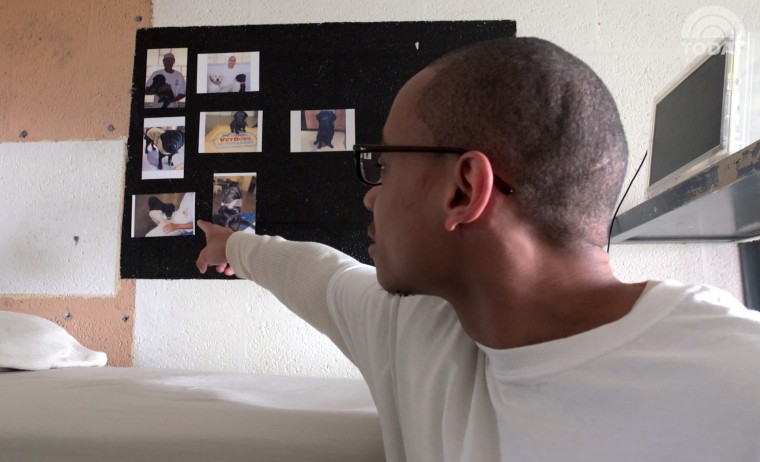
"(The dog) doesn’t care what that person did in the past,'' Tyler said. "He doesn’t make those judgments. He cares who they are today. Is he honest today? Is he trustworthy? Does he keep that puppy safe? I think because (the dog) doesn’t pass those judgments, that type of relationship is likely one that is very valued at a prison."
RELATED: TODAY's puppy with a purpose reunites with family after 7 months of training
The rate of recidivism for the average inmate at Enfield is 85 percent, according to Timbro. For those involved in the AVD program, it's less than 25 percent.
Changing lives
The inmates have two training sessions per day with the dogs, who learn skills like opening refrigerator doors, turning on light switches and picking up items off the ground that might be difficult for a wounded veteran to reach.
"Once I started working with the dogs and seeing how smart they are and how they respond to you with the proper training and skills that you showed them, it amazed me,'' Tyrel said. "I never knew dogs were that smart. It’s really exceeded my expectations."
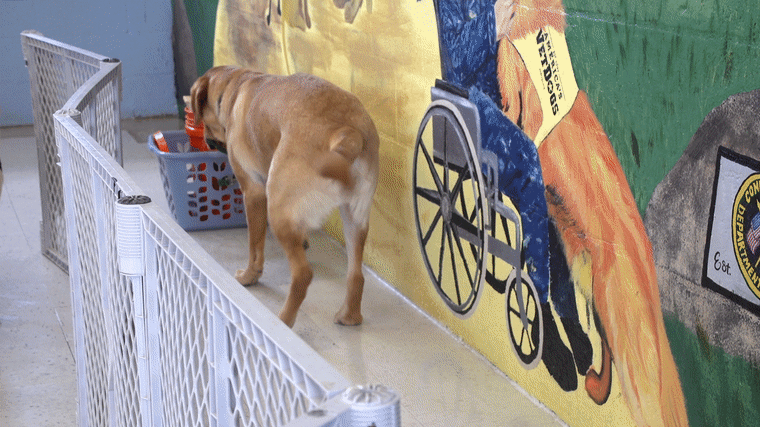
The constant companionship of the dog also makes a difference in the inmates' mental well-being.
"You try to stay constructive, and stay active in your mind, but eventually there’s only so much you can do and you end up kind of just sitting around waiting, just doing time,'' inmate Gerard, who works with Crema, told TODAY. "With a dog, it changes that whole little concept. You’re always doing something."
Each dog is trained for the rigorous test to become a service dog, but not all of them pass. About 6 out of 10 make the cut, and the rest often become bomb-sniffing dogs for law enforcement agencies like the Bureau of Alcohol, Tobacco, Firearms and Explosives, according to Tyler.
RELATED: 92-year-old veteran's service dog will 'follow me to the end of the earth'
"It makes you almost feel like a proud dad, like when you send your child off to school and they do well,'' Tyrel said.
The veteran component is also meaningful to the inmates, many of whom have military members in their families. U.S. Army veteran David Cameron, who received a dog named Disco from the program, relayed his gratitude in a letter to the prison.
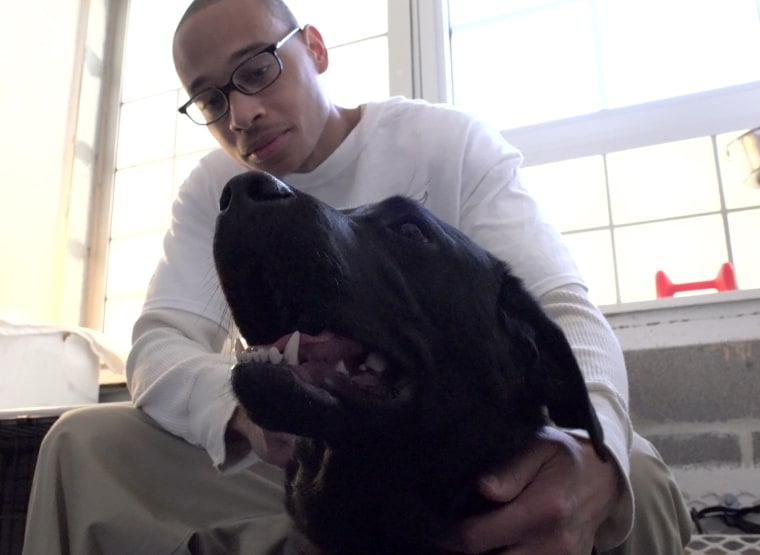
"This amazing dog instantly gave me a sense of security that I never felt before,'' Cameron wrote. "Within a week I stopped taking sleeping pills that I had been using every night for almost three years. He helped me to open up to people and talk to strangers who I previously would have just avoided eye contact with.
RELATED: How service dogs help veterans with PTSD heal, embrace life again
"Disco has become such an important member of our family, and I don't know what I would do without him."
As the inmates in the program focus on the day they get to change their own lives upon their release, they take solace knowing their time with their dogs is doing the same for a special group of people.
"It's just knowing that you need to guide this dog, you need to develop this dog into something kind of more than you,'' Gerard said. "This dog is going to become more than the program; it’s going to do more than just what’s written down on the pieces of paper. This dog is going to essentially change someone’s life."
Follow TODAY.com writer Scott Stump on Twitter.